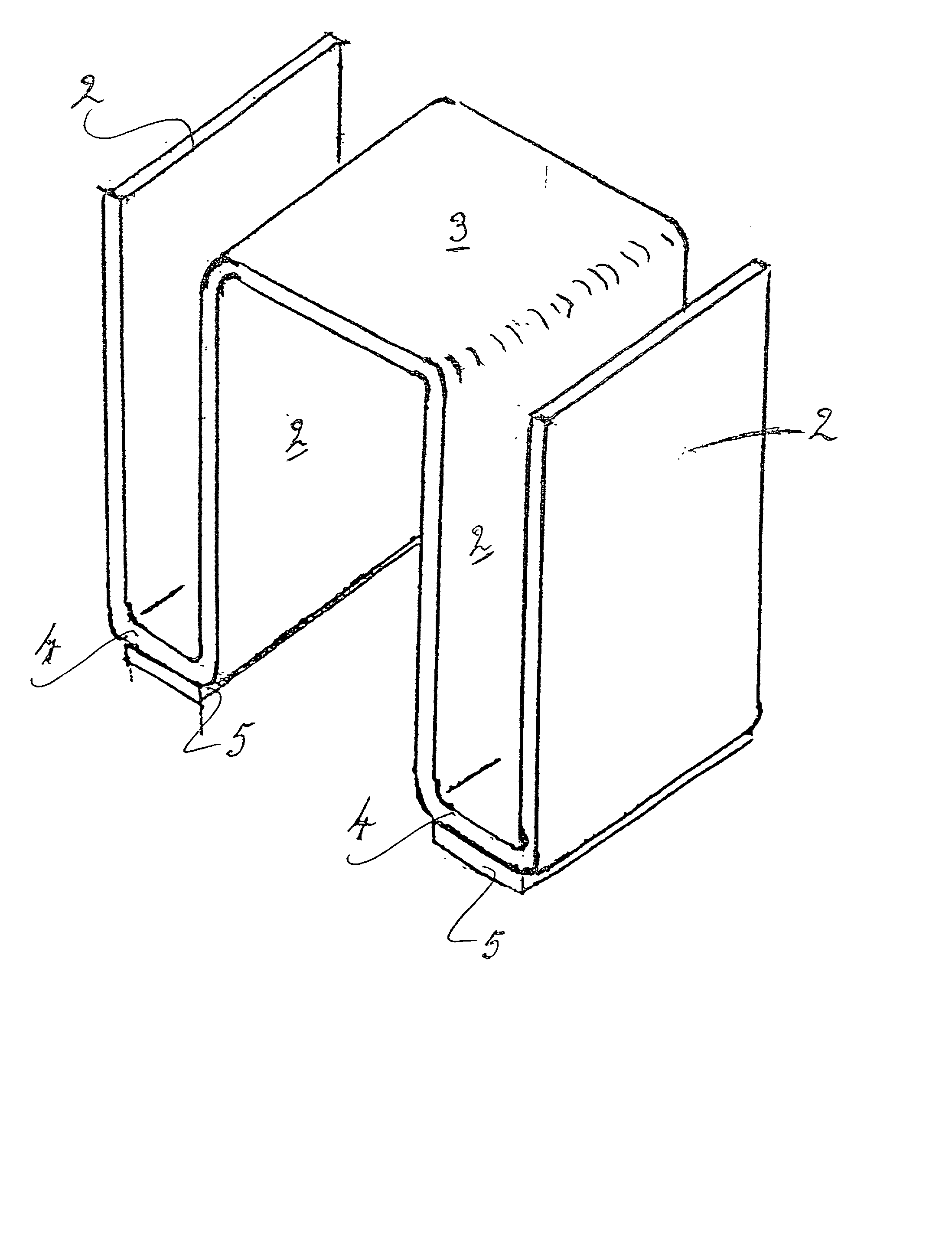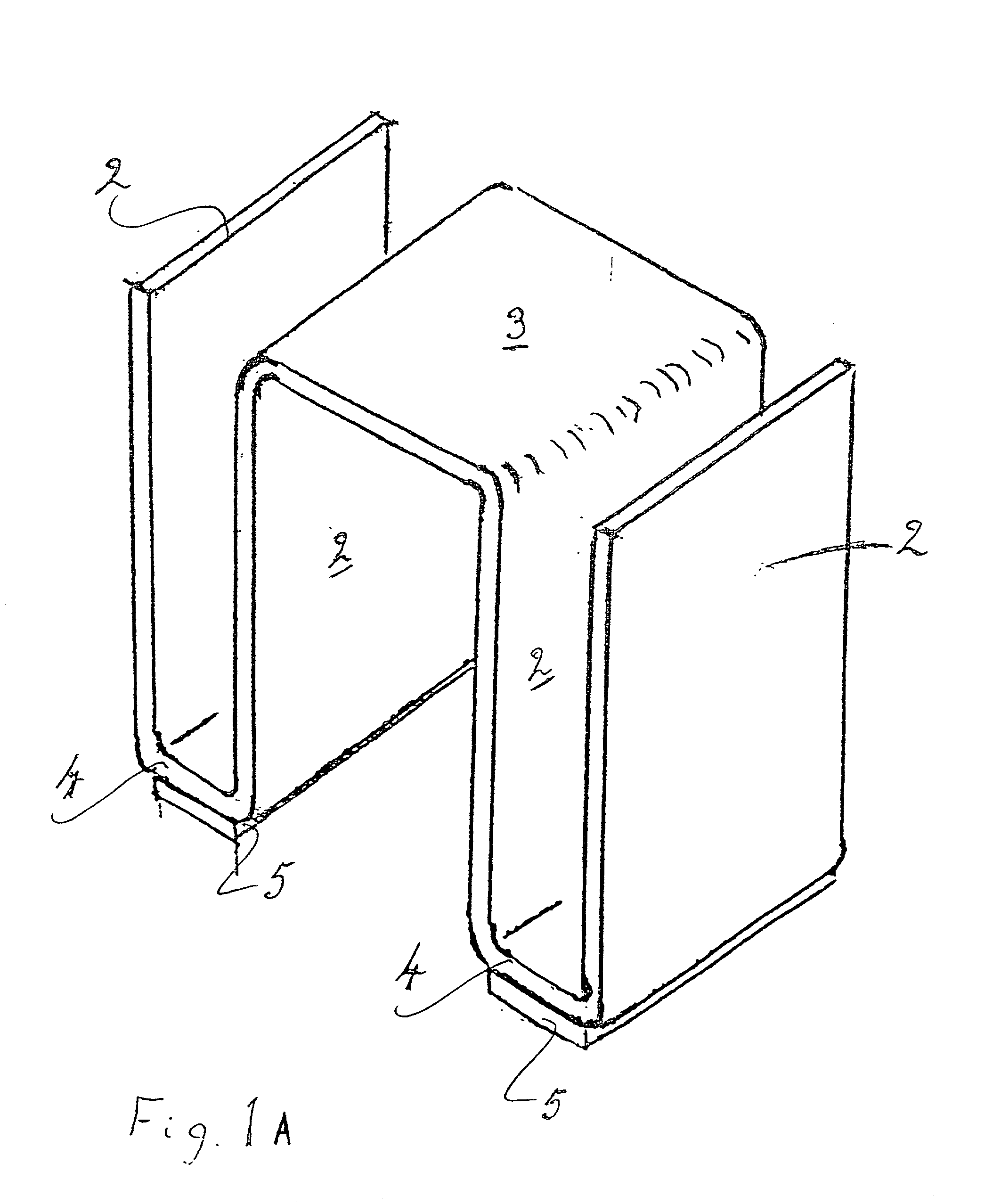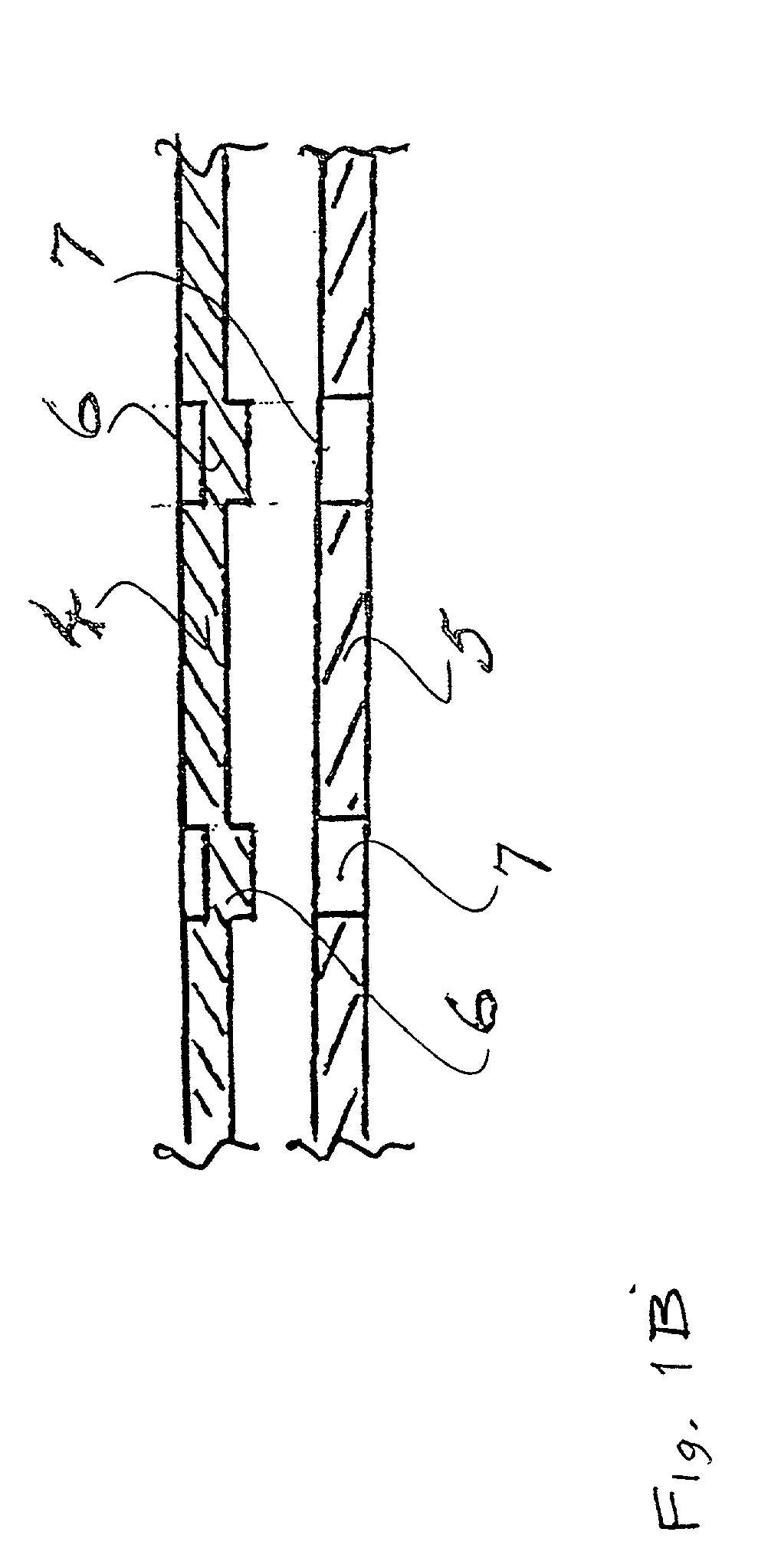Heat sink
a heat sink and heat sink technology, applied in the direction of insulated conductors, sustainable manufacturing/processing, cables, etc., can solve the problems of increasing the complexity of the board, the inability to operate the device, and the inability to meet the requirements of the devi
- Summary
- Abstract
- Description
- Claims
- Application Information
AI Technical Summary
Benefits of technology
Problems solved by technology
Method used
Image
Examples
Embodiment Construction
[0044] A surface mounted heat sink assembly according to one aspect of the present invention is illustrated in FIG. 1. An anodized blackened, aluminum sheet is formed to provide a finned heat sink 1 having freely extending heat dissipating fins 2 arranged on either side of a planar section 3 intended to be arranged in use over an electronic device (not shown) to be protected against heat overload. The heat sink 1 has surface mounting lands 4 at the base of the heat sink which are adapted for soldering to a substrate by a soldering technique known per se in the field, e.g. solder reflow methods, by the provision of thermally conductive solderable elements 5. These solderable elements 5 are contiguous with and extend over the surface of the lands 4, and are retained in position by a mechanical fixing (FIG. 1(b)). Such a mechanical fixing is achievable by partially shearing or semi-perforating the land to drive out a projection to provide a spigot 6 (FIG. 1b) that is inserted into a co...
PUM
| Property | Measurement | Unit |
|---|---|---|
| thermally conductive | aaaaa | aaaaa |
| heat | aaaaa | aaaaa |
| temperature | aaaaa | aaaaa |
Abstract
Description
Claims
Application Information
 Login to View More
Login to View More - R&D
- Intellectual Property
- Life Sciences
- Materials
- Tech Scout
- Unparalleled Data Quality
- Higher Quality Content
- 60% Fewer Hallucinations
Browse by: Latest US Patents, China's latest patents, Technical Efficacy Thesaurus, Application Domain, Technology Topic, Popular Technical Reports.
© 2025 PatSnap. All rights reserved.Legal|Privacy policy|Modern Slavery Act Transparency Statement|Sitemap|About US| Contact US: help@patsnap.com



